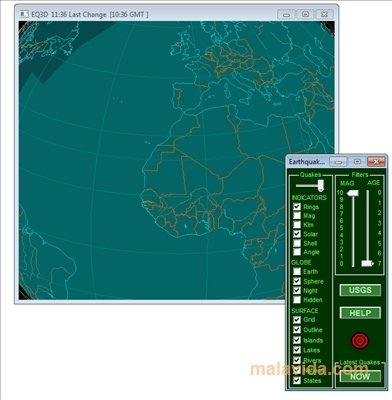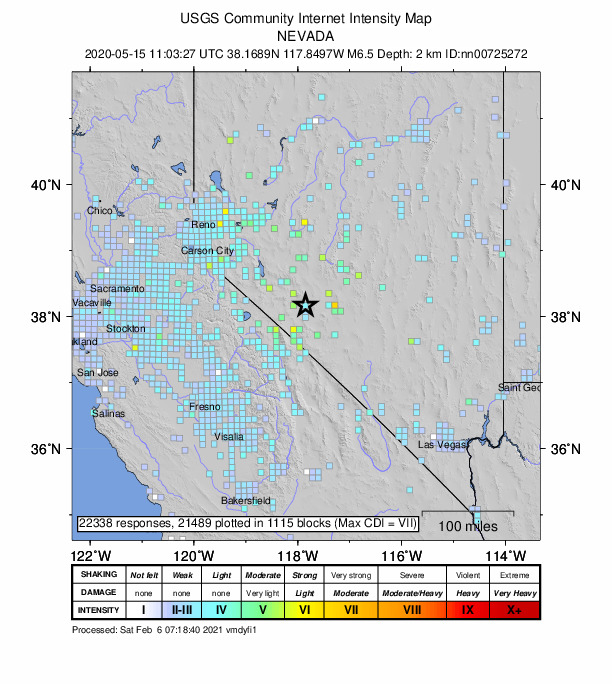

In general, stiff-soil sites in the Seattle basin exhibit higher hazard than stiff-soil sites outside the basin. The next highest hazard is typically found for soft-soil sites in the Duwamish Valley south of the Seattle basin. The maps show that the most hazardous locations for this frequency band (around 1 Hz) are soft-soil sites (fill and alluvium) within the Seattle basin and along the inferred trace of the frontal fault of the Seattle fault zone. The maps are based on determinations of seismic hazard for 7236 sites with a spacing of 280 m. The probabilistic seismic hazard maps presented here depict 1 Hz response spectral accelerations with 10%, 5%, and 2% probabilities of exceedance in 50 years. The 3D velocity model utilized in the simulations was validated by modeling the amplitudes and waveforms of observed seismograms from five earthquakes in the region, including the 2001 M6.8 Nisqually earthquake. The maps presented in this document used essentially the same set of faults and distributed-earthquake sources as in the 2002 national seismic hazard maps. 3D simulations were conducted for the various earthquake sources that can affect Seattle: Seattle fault zone, Cascadia subduction zone, South Whidbey Island fault, and background shallow and deep earthquakes. The report describes the methodology for incorporating source and site dependent amplification factors into a probabilistic seismic hazard calculation. Nonlinear site response for soft-soil sites of fill and alluvium was also applied in the maps. These maps include 3D sedimentary basin effects and rupture directivity. Accessing the information you need is easier and quicker than ever.This report presents probabilistic seismic hazard maps for Seattle, Washington, based on over 500 3D simulations of ground motions from scenario earthquakes. Filters and searches work seamlessly with the map records table to get you the info you need with fewer clicks. We've added the ability to preview maps within the interface and give you tools to compare any historical map with maps of the present.
USGS 3D EARTHQUAKE MAP FULL
The latest version of topoView is full of enhancements based on hundreds of your comments and suggestions. Each sphere represents an earthquake event (mainshock or aftershock). Odum, and Susan Rhea Open-File Report 20071175 U.S. Earthquake: Magnitude: 6.6 Origin Time: Depth: 6 mi. This 3D video of the RES was made with time (July 4-8, 2019) plotted along the vertical axis and the earthquake sequence projected from the 2D geographic map onto the vertical timeline. Seismic Hazard Maps for Seattle, Washington, Incorporating 3D Sedimentary Basin Effects, Nonlinear Site Response, and Rupture Directivity By Arthur D. New functionality driven by your feedback 3D Ridgecrest video: 3D view of the Ridgecrest earthquake sequence. Like the historical topographic mapping collection, we've added a variety of file formats previously unavailable for the US Topo series, including GeoTIFF and KMZ.
USGS 3D EARTHQUAKE MAP SERIES
The US Topo series is a latest generation of topographic maps modeled on the USGS historical 7.5-minute series (created from 1947-1992). We've added the US Topo series to topoView, giving users access to over 3 million downloadable files from 2009 to the present day. The NGMDB project is proud to assist the NGP in bringing these maps to the Web. Geologic and topographic mapping have a long tradition together (see 1888 report). This interface was created by the National Geologic Map Database project (NGMDB), in support of the topographic mapping program, managed by the USGS National Geospatial Program (NGP). TopoView shows the many and varied older maps of each area, and so is especially useful for historical purposes-for example, the names of some natural and cultural features have changed over time, and the historical names can be found on many of these topographic maps.

The most current map of each area is available from The National Map. As the years passed, the USGS produced new map versions of each area.

Share your insights with the world or specific groups. Work with smart, data-driven styles and intuitive analysis tools. This mapping was done at different levels of detail, in order to support various land use and other purposes. Connect people, locations, and data using interactive maps. In 1879, the USGS began to map the Nation's topography. TopoView highlights one of the USGS's most important and useful products, the topographic map.


 0 kommentar(er)
0 kommentar(er)
